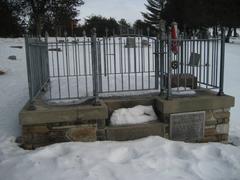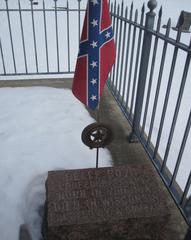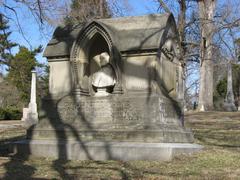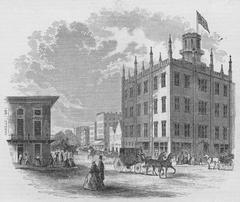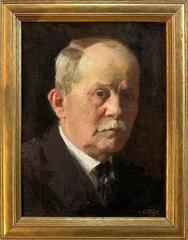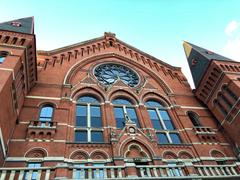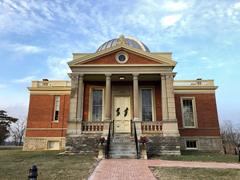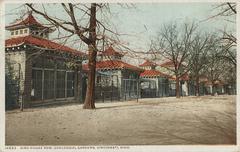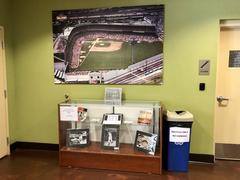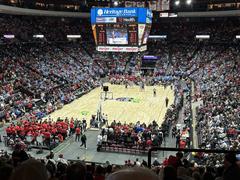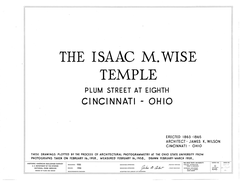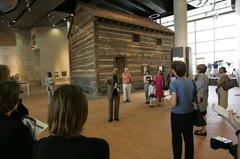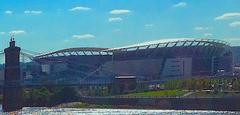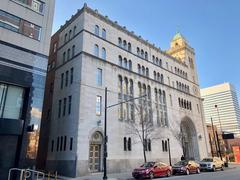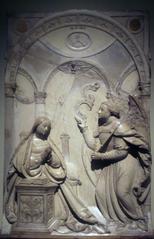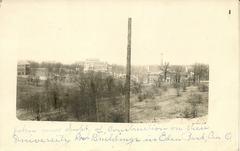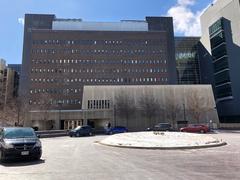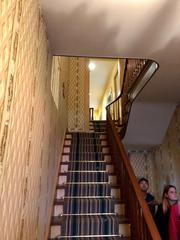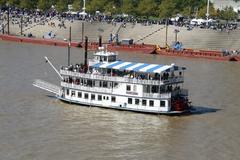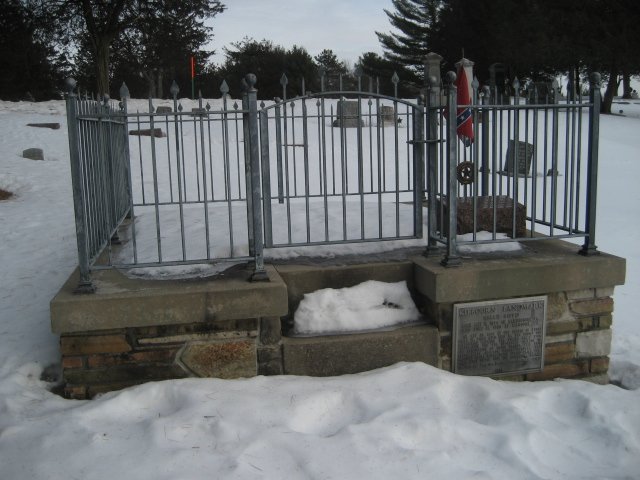
Spring Grove Cemetery Visiting Hours, Tickets, and Cincinnati Historical Sites Guide
Date: 14/06/2025
Introduction
Spring Grove Cemetery and Arboretum in Cincinnati, Ohio, is a nationally recognized landmark that seamlessly integrates history, horticulture, architecture, and cultural heritage. Established in 1844, it is not only a burial ground but also a public park, a botanical museum, and a community resource. Spanning over 733 acres with 450 acres developed as meticulously landscaped grounds, Spring Grove is the third largest cemetery in the United States and a designated National Historic Landmark. Its innovative “lawn plan” design and extensive arboretum make it a botanical treasure within an urban setting, drawing history enthusiasts, nature lovers, and those seeking tranquil reflection.
Spring Grove is the final resting place of notable figures, including Levi Coffin, Civil War generals such as Joseph Hooker, and business leaders like Bernard Kroger and James Gamble. Architectural highlights, including chapels, mausoleums, and monuments, reflect 19th-century funerary art and design. The cemetery also serves as a vital green space for wildlife and community events, offering guided and self-guided tours that explore its historical and botanical narratives. For detailed visitor information and upcoming events, visit the official Spring Grove website or learn more on Wikipedia.
Table of Contents
- Introduction
- Origins and Development as a Rural Cemetery
- National Historic Landmark Status and Scale
- Architectural and Artistic Heritage
- Final Resting Place of Notable Individuals
- Civil War and Military Heritage
- Landscape Design and Historical Context
- Arboretum Status and Botanical Diversity
- Natural Features: Lakes, Woodlands, and Lawns
- Seasonal Highlights and Horticultural Events
- Notable Trees and Plantings
- Horticultural Leadership and Legacy
- Visiting Hours, Tickets, and Accessibility
- Parking and Navigation
- Guided and Self-Guided Tours
- Birdwatching and Nature Observation
- Visitor Etiquette and Rules
- Amenities and Facilities
- Tips for a Memorable Visit
- Nearby Attractions
- Frequently Asked Questions (FAQ)
- Visuals and Interactive Elements
- Community Engagement and Public Memory
- Representation and Remembrance
- Influence on Urban Planning and Cemetery Design
- Ongoing Preservation and Educational Mission
Origins and Development as a Rural Cemetery
Spring Grove Cemetery was established in 1844 by the Cincinnati Horticultural Society during the rural cemetery movement, which aimed to create park-like burial grounds inspired by sites such as Père Lachaise in Paris and Mount Auburn in Massachusetts (Wikipedia; UC Cincinnati). The movement emphasized natural beauty, horticulture, and monumental art, and Spring Grove’s name reflects its abundant springs and groves. The first burial occurred in September 1845.
Howard Daniels designed the original layout, later enhanced by Adolph Strauch in 1855, who introduced the influential “lawn plan” with open vistas, winding roads, and curated plantings (Footpaths Blog). This approach set a new standard for cemetery design across the United States.
National Historic Landmark Status and Scale
Spring Grove Cemetery is a designated U.S. National Historic Landmark, recognized for its architectural, horticultural, and historical significance (Wikipedia; Spring Grove Official). At 733 acres, it is the third largest cemetery in the country, featuring more than 1,200 species of trees and shrubs, including numerous Ohio state and national champion trees (Footpaths Blog). Its arboretum status underscores its role as a living museum of horticulture.
Architectural and Artistic Heritage
Spring Grove is renowned for its funerary art, sculpture, and architecture (Spring Grove Heritage Foundation). Notable features include:
- Main Gate and Carriage House: Built in 1863 by James Keys Wilson, with a 1955 addition by India Boyer (Cincinnati Refined).
- Norman Chapel: Romanesque structure designed by Samuel Hannaford in 1879, notable for its limestone, sandstone, and stained glass.
- Dexter Mausoleum: An iconic 19th-century funerary monument (UC Cincinnati).
- Victorian-Era Monuments and Statuary: Elaborate obelisks, sculptures, and memorials crafted by prominent artists (Spring Grove Heritage Foundation).
Final Resting Place of Notable Individuals
Spring Grove Cemetery is the burial site for many influential figures:
- Salmon P. Chase: Chief Justice of the United States and Secretary of the Treasury under Lincoln (Wikipedia).
- Civil War Generals: Including Joseph Hooker and members of the “Fighting McCooks” (Battlefields.org).
- Levi Coffin: “President of the Underground Railroad” (CityBeat).
- Powhatan Beaty: Medal of Honor recipient and African American Civil War veteran.
- Business Leaders: Bernard Kroger, James Gamble, William Procter, and Powel Crosley Jr.
- Innovators: Dr. Henry Heimlich (Heimlich maneuver), and John Withrow (Withrow High School) (Footpaths Blog; CityBeat).
- The cemetery also honors the achievements of Black Cincinnatians, including notable activists and educators (The Voice of Black Cincinnati).
Civil War and Military Heritage
Spring Grove is a significant site for Civil War history, with 999 Civil War soldiers and 40 generals interred (Battlefields.org). Its military sections and monuments provide a window into the region’s role in national conflicts and the stories of those who served.
Landscape Design and Historical Context
Spring Grove exemplifies 19th-century rural cemetery ideals, featuring rolling hills, valleys, lakes, islands, and woodland areas. Adolph Strauch’s “landscape lawn plan” emphasized harmony with the natural contours of the land, open vistas, and minimal fencing, influencing cemetery design nationwide (Spring Grove Legacy; Mausoleums.com).
Arboretum Status and Botanical Diversity
Officially designated as an arboretum in 1987, Spring Grove is home to over 1,200 labeled trees and shrubs, encompassing more than 400 species and cultivars (Spring Grove Legacy). Highlights include dawn redwoods, bald cypress, ginkgo, magnolias, and oaks, as well as numerous state and national champion trees (Spring Grove Arboretum). The arboretum serves both aesthetic and educational purposes, supporting research, conservation, and public outreach.
Natural Features: Lakes, Woodlands, and Lawns
The landscape features interconnected lakes and ponds, footbridges, protected woodlands for wildlife, and sweeping lawns punctuated by mature trees and monuments (Spring Grove Legacy). These elements create a serene environment and support diverse flora and fauna.
Seasonal Highlights and Horticultural Events
Each season brings new beauty to Spring Grove:
- Spring: Blossoming cherry, magnolia, and dogwood trees; “History in Bloom” guided tours (Local12 News).
- Summer: Vibrant rose gardens and perennial borders, with events like outdoor movie nights (365Cincinnati).
- Autumn: Exceptional fall foliage from maples, oaks, and sweetgums.
- Winter: Architectural evergreens and landscape structure provide visual interest.
Horticultural and educational events, including themed tours, birdwatching walks, and photography nights, are held year-round (Spring Grove Events).
Notable Trees and Plantings
Champion and rare trees are a highlight:
- Dawn Redwood: Once thought extinct, now thriving at Spring Grove.
- Ginkgo: Mature specimens with golden autumn foliage.
- Bald Cypress: Notable for their knees and feathery foliage.
- Magnolias and Dogwoods: Both native and exotic varieties bloom extensively (Spring Grove Arboretum).
Many trees are labeled for self-guided exploration.
Horticultural Leadership and Legacy
Visionary leadership from Adolph Strauch and subsequent horticulturists such as Thomas L. Smith established Spring Grove’s reputation for excellence (Spring Grove Arboretum: Who’s Who in Horticulture). The cemetery collaborates with universities and botanical organizations to further research and education.
Visiting Hours, Tickets, and Accessibility
- Hours: Open daily from 8:00 AM to 6:00 PM (birdinghotspots.org). Some sources note summer hours may extend to 7:00 PM; check the official website for updates.
- Admission: Free for general entry. Guided tours and special events may require tickets (Spring Grove Events).
- Accessibility: Most paths are paved and wheelchair accessible; assistance is available at the visitor center. Restrooms are located near the main entrance (birdinghotspots.org).
Parking and Navigation
- Parking: Free and permitted along internal roads. Download a map or pick one up at the entrance, as the extensive network of roads can be confusing (birdinghotspots.org).
- Directions: Located at 4521 Spring Grove Avenue, Cincinnati, OH 45232. Easily accessible by car and public transit.
Guided and Self-Guided Tours
- Guided Tours: Walking, twilight, carriage, and tram tours are offered, exploring horticulture, history, and art. Themed tours and special events are held throughout the year. Reservations are recommended (365cincinnati.com).
- Self-Guided Tours: Maps and plant lists are available at the visitor center and online. Notable features are well-labeled for independent exploration.
Birdwatching and Nature Observation
Spring Grove is a top birding hotspot, especially during migration. Look for Merlins, Red-breasted Nuthatch, Pine Siskin, and a variety of migratory and resident species (birdinghotspots.org). The central woodlot and lakes are prime areas for birdwatching.
Visitor Etiquette and Rules
- Stay on designated paths and roads.
- Respect posted signs and restricted areas.
- Personal photography is allowed; commercial photography requires permission.
- Pets are not permitted except for service animals.
- Maintain quiet reflection and respectful behavior.
Amenities and Facilities
- Restrooms: Near the main entrance.
- Benches and Rest Areas: Throughout the grounds.
- Maps and Information: Available at the entrance and online.
- Accessibility: Wheelchair-accessible trails and roadside viewing.
Tips for a Memorable Visit
- Review the cemetery map and event schedule.
- Wear comfortable shoes and dress for the weather.
- Bring binoculars for birdwatching.
- Allow ample time; the grounds are extensive.
- Register in advance for tours and special events.
Nearby Attractions
- Oak Hill Cemetery: Managed by Spring Grove, located in Glendale, featuring notable trees and history (birdinghotspots.org).
- Other Cincinnati highlights: Cincinnati Zoo & Botanical Garden, Over-the-Rhine historic district, Cincinnati Art Museum.
Visuals and Interactive Elements
High-quality images, virtual tours, and interactive maps are available on the official website. Look for photos of the Main Gate, Norman Chapel, arboretum views, monuments, and lakes.
Frequently Asked Questions (FAQ)
Q: What are the visiting hours?
A: Open daily from 8:00 AM to 6:00 PM, with some variations in summer.
Q: Is admission free?
A: Yes, general admission is free. Some tours and events require tickets.
Q: Are tours available year-round?
A: Yes. Check the events page for details.
Q: Is the cemetery wheelchair accessible?
A: Most paths are accessible; check with the visitor center for specifics.
Q: Can I bring a pet?
A: Pets are not allowed, except service animals.
Q: Are restrooms available?
A: Yes, near the main entrance.
Q: Is photography allowed?
A: Personal use only; commercial photography requires permission.
Community Engagement and Public Memory
Spring Grove is an active center for public events, tours, and educational workshops (Spring Grove Official). The Spring Grove Heritage Foundation supports preservation and education efforts, ensuring the site’s ongoing value as a “museum without walls” (Spring Grove Heritage Foundation).
Representation and Remembrance
The cemetery honors diverse histories, recognizing the achievements of Black Cincinnatians and other underrepresented groups (The Voice of Black Cincinnati). Its inclusive approach to memorialization preserves the legacies of activists, educators, and pioneers.
Influence on Urban Planning and Cemetery Design
Spring Grove’s design has influenced urban green spaces and cemetery planning nationwide, establishing principles that have shaped both memorial landscapes and public parks (UC Cincinnati).
Ongoing Preservation and Educational Mission
Ongoing preservation is managed by the Heritage Foundation and dedicated staff, with public and private tours, educational programs, and genealogical resources available (Spring Grove Notable Burials).
Conclusion
Spring Grove Cemetery and Arboretum stands as a living testament to Cincinnati’s history, culture, and natural beauty. Its role as a National Historic Landmark, arboretum, and community institution makes it a must-see destination. Whether you are interested in history, horticulture, or quiet contemplation, Spring Grove offers a memorable experience. Plan your visit by checking hours, event schedules, and downloading the Audiala app for interactive tours. Explore nearby attractions to enrich your Cincinnati adventure (springgrove.org), (birdinghotspots.org), (365cincinnati.com).
References
- Spring Grove Cemetery (Wikipedia)
- Spring Grove Cemetery & Arboretum Visitors Guide
- Spring Grove Cemetery and Arboretum Cincinnati Ohio (Footpaths Blog)
- Spring Grove Cemetery and Arboretum Mausoleums (Mausoleums.com)
- Birding Hotspots: Spring Grove Cemetery
- Spring Grove Cemetery Tours (365 Cincinnati)
- Honoring Black Cincinnatians at Spring Grove Cemetery (The Voice of Black Cincinnati)
- Spring Grove Heritage Foundation
- Spring Grove Arboretum: Who’s Who in Horticulture
- Spring Grove Events
